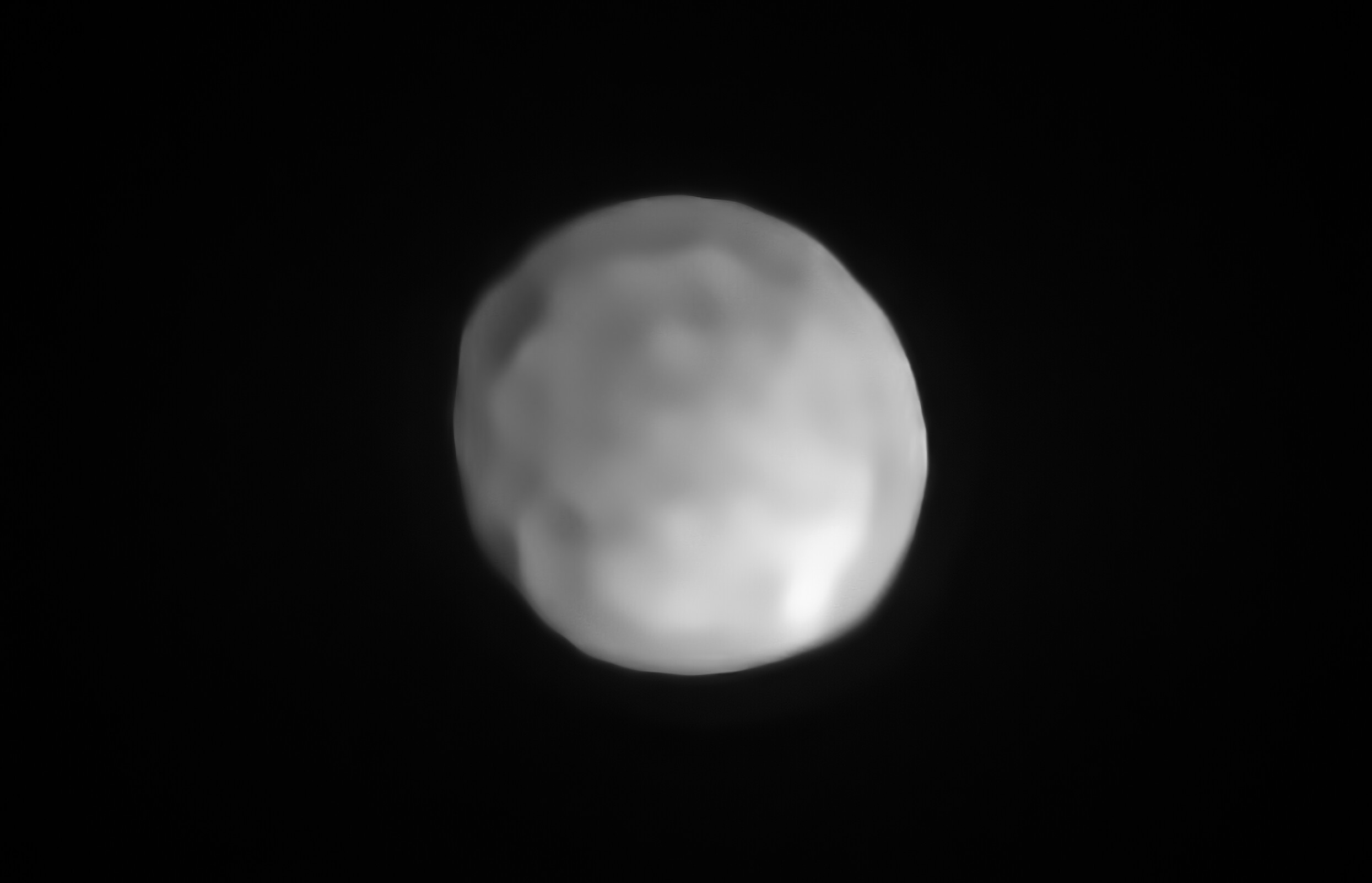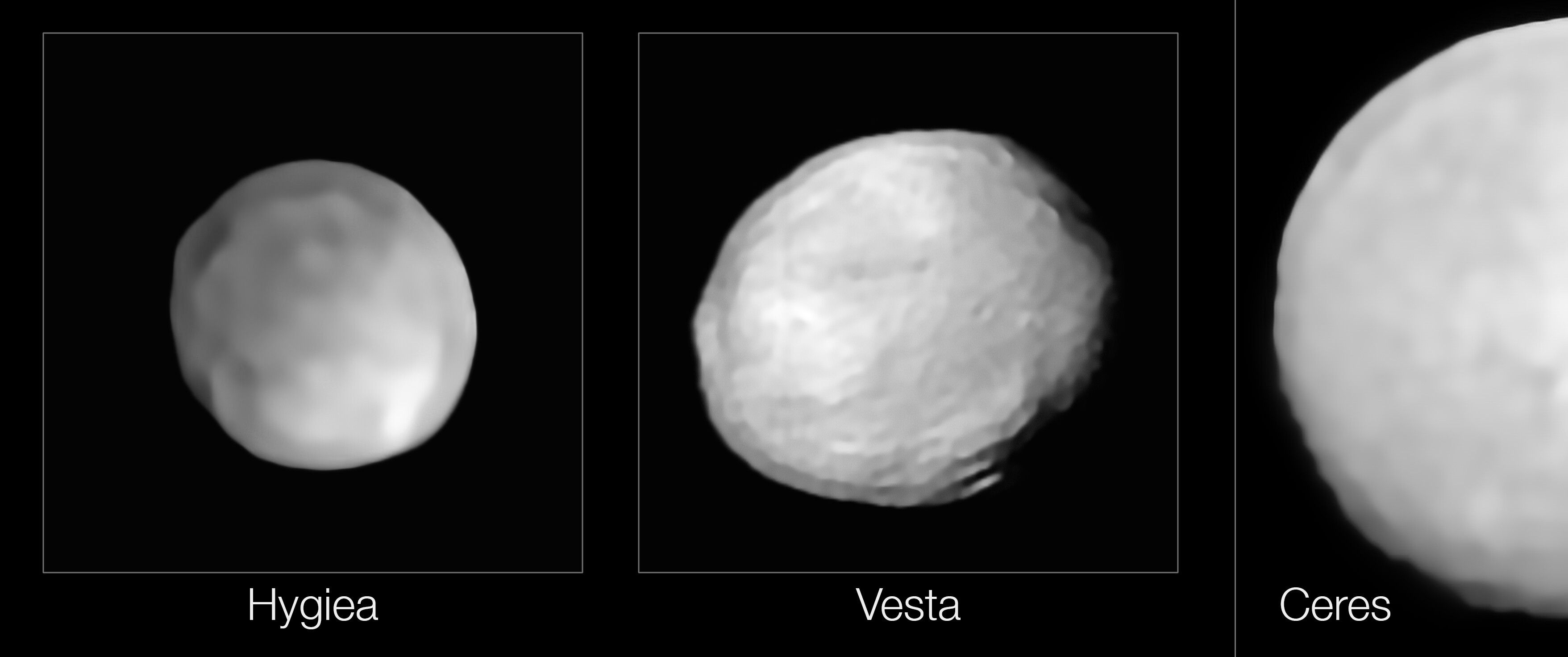Will our Solar System soon have its sixth dwarf planet?
According to the definition of the International Astronomical Union (IAU), dwarf planets are celestial bodies that do indeed have the round shape of a planet, but do not have sufficient mass to dominate the area around their distance to the Sun. The most well-known example of a dwarf planet is surely Pluto (with a diameter of 2400 kilometers (1490 miles)). Eris, Makemake, and Haumea are three other dwarf planets orbiting in the outer regions of our Solar System. At 950 kilometers (590 miles), Ceres is the largest object in the Asteroid Belt and simultaneously the smallest dwarf planet.
But maybe not for much longer, because the asteroid Hygiea also appears to be approximately spherical. The asteroid discovered by Annibale de Gasparis on April 12, 1849 in Naples was named after Hygieia, the daughter of the god Asclepios from Greek mythology. It is only the fourth largest object in the Asteroid Belt. However, differently than the somewhat larger asteroids, Vesta and Pallas, it actually appears to be spherical, as observations with the SPHERE instrument of the Very Large Telescope of the European Southern Observatory, ESO, have shown.
“Thanks to the unique capability of the SPHERE instrument on the VLT, which is one of the most powerful imaging systems in the world, we could resolve Hygiea’s shape, which turns out to be nearly spherical,” lead researcher Pierre Vernazza of the Laboratoire d’Astrophysique de Marseille in France said in an ESO press release. “Thanks to these images, Hygiea might be reclassified as a dwarf planet, the smallest in the Solar System so far.”
The new images had another surprise for the researchers: Hygiea doesn’t have the large impact craters as expected on other members of the largest family of asteroids, almost 7000 members, which all have the same origin. The astronomers had assumed that the event that led to the creation of this large group would have also had to have left its traces on Hygiea.
“This result was a real surprise, because we were expecting to find a large impact basin, as is the case with Vesta,” said Vernazza. Even though the astronomers have observed 95% of the surface of Hygiea, they were only able to identify two unique craters. “Neither of these two craters could have been caused by the impact that originated the Hygiea family of asteroids, whose total volume corresponds to that of a 100 km (62 mile) sized object. They are too small,” said Miroslav Brož of the Astronomical Institute of Charles University in Prague, Czech Republic, one of the co-authors of the study.
Using numerical simulations, the team concluded that the spherical shape of Hygiea and the large family of asteroids was likely the result of a serious head-on collision between a parent body and a large projectile with a diameter between 75 and 150 kilometers (47 and 94 miles). The crash had to have occurred about 2 billion years ago. The parent body was completely destroyed. The remnants coalesced again under the force of their own gravity, forming the round shape of Hygiea and thousands of other asteroids. “Such a collision between two large bodies in the Asteroid Belt is unique in the last 3-4 billion years,” said Pavel Ševec, doctoral candidate at the Astronomical Institute of the Charles University in Prague, who also took part in the study.

